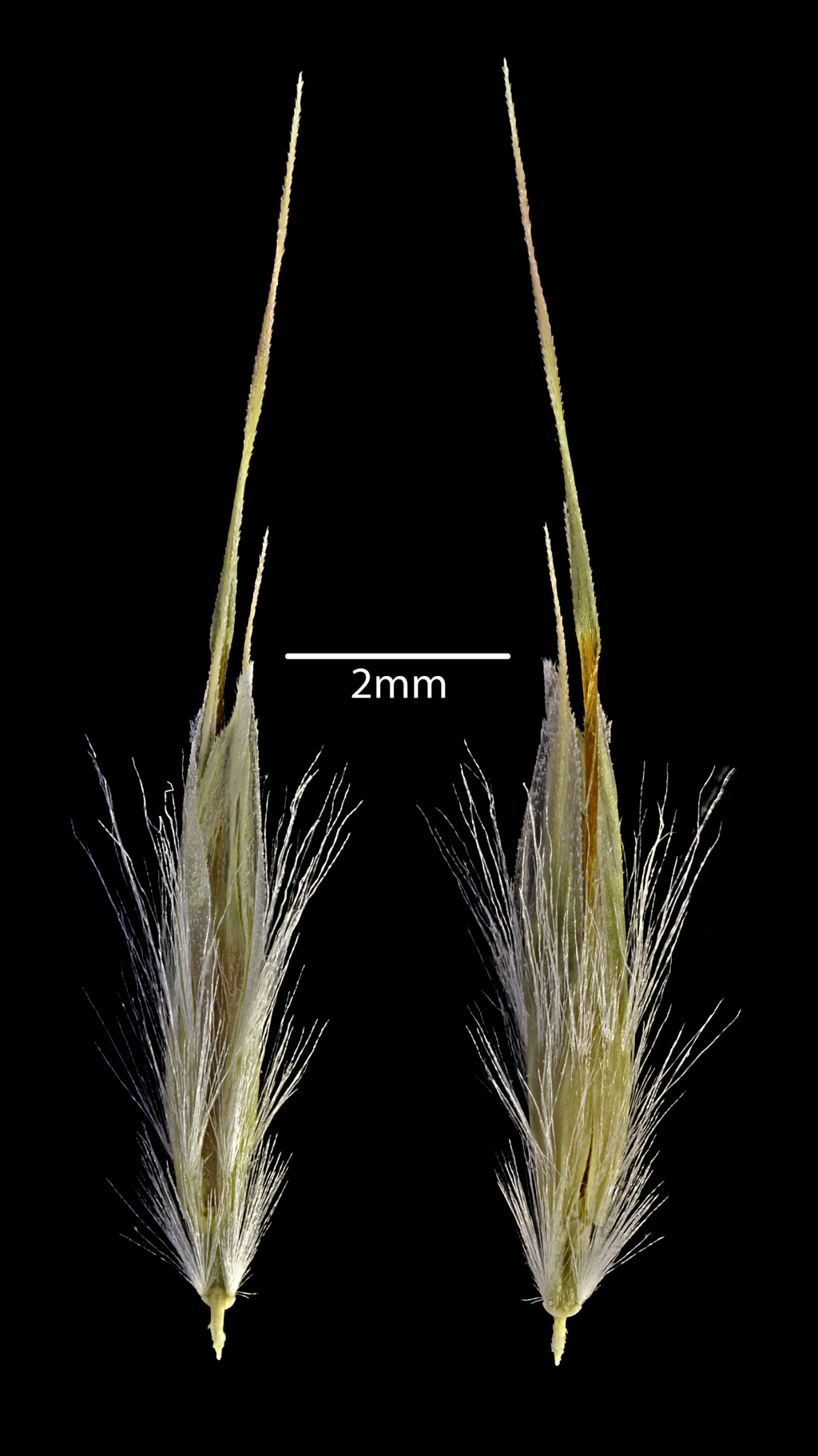Rytidosperma lepidopodum
(N.G.Walsh) A.M.Humphreys & H.P.LinderSlender perennial, developing long, scaly rhizomes. Culms to 60 cm high. Leaves glabrous to sparsely hairy; blade flat or channelled, becoming inrolled on drying to 15 cm long, and 2 mm wide. Panicle linear to narrowly ovate, rather sparse and with few (usually less than 20) spikelets, to 8 cm long. Spikelets purplish when young, mostly 3- or 4-flowered; glumes subequal, lanceolate, 8–14 mm long; lemma 3–4 mm long, lightly and more or less evenly covered with hairs which are occasionally aggregated into tufts in an indistinct, slightly longer upper series; lateral lobes erect, 3–5 mm long, evenly tapered to the 1–2 mm long setiform tips or setae lacking; central awn weakly twisted in the lower c. 2 mm, exceeding lateral lobes by 3–6 mm; palea narrow-lanceolate or oblong, far exceeding sinus and approaching or equal to the tips of the lateral lobes. Flowers Nov.–Mar.
VVP, GipP, OtP, WaP, GGr, EGL, HSF, OtR. Also SA. Occurs on sandy or gritty soils common in heathland or heathy woodland. Known from southern Victoria, from the SA border to Latrobe Valley.
The floret is most similar to that of Rytidosperma pallidum, but the general habit of the plant and occasional organisation of hairs of the lemma into series is more typical of other species of Rytidosperma. The long-creeping, scaly rhizome is in the genus. Fully formed caryposes (seeds) are rarely found in spikelets, suggestive of the species perhaps being of hybrid origin, and, given the variation of degree of organisation of hairs on the lemma, perhaps not always of the same parentage (although R. pallidum is likely one parent in each case).
Walsh, N.G. (1994). Poaceae. In: Walsh, N.G.; Entwisle, T.J., Flora of Victoria Vol. 2, Ferns and Allied Plants, Conifers and Monocotyledons, pp. 356–627. Inkata Press, Melbourne.
 Spinning
Spinning